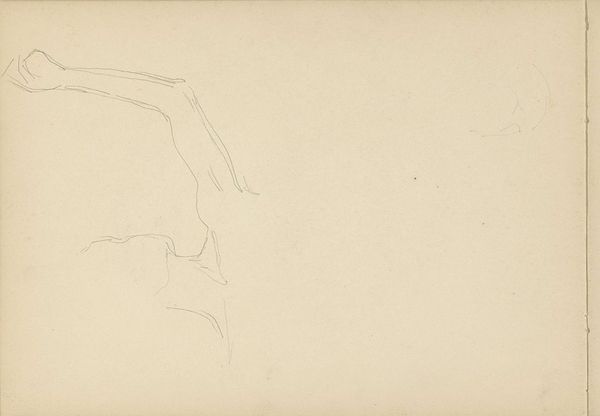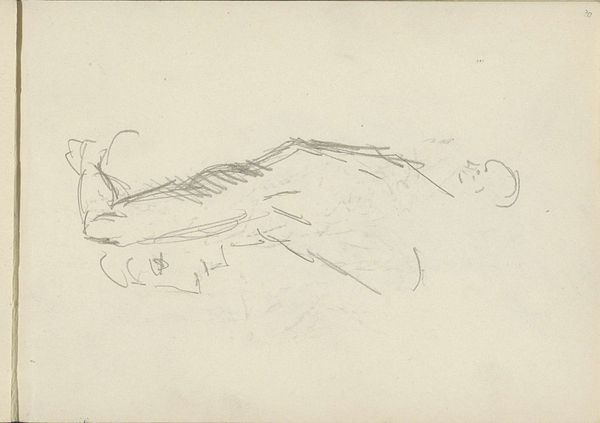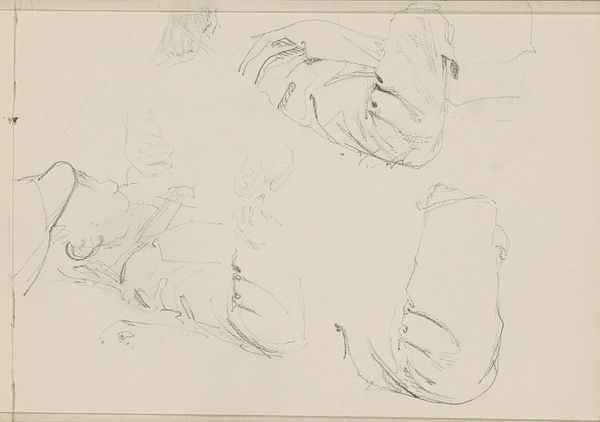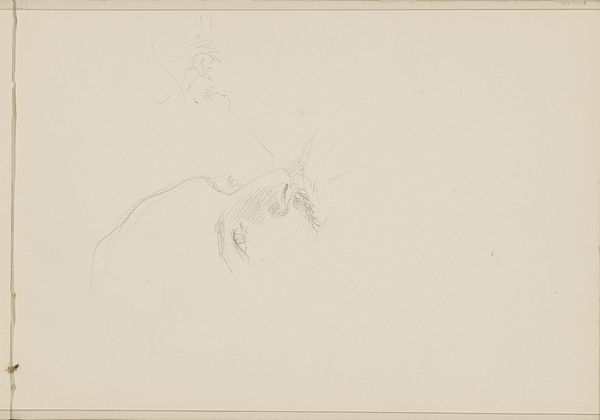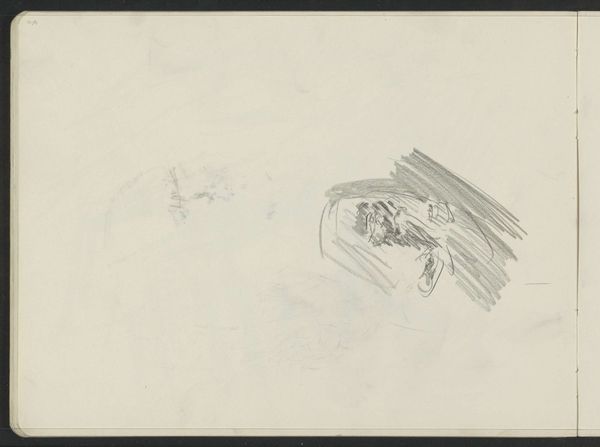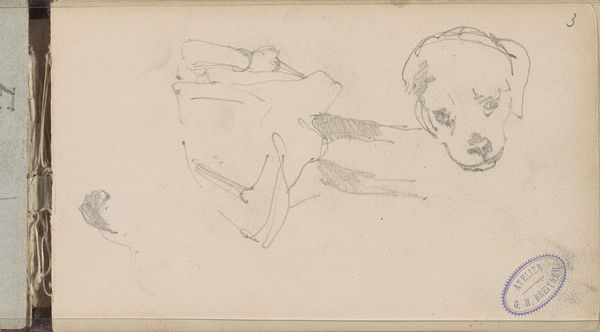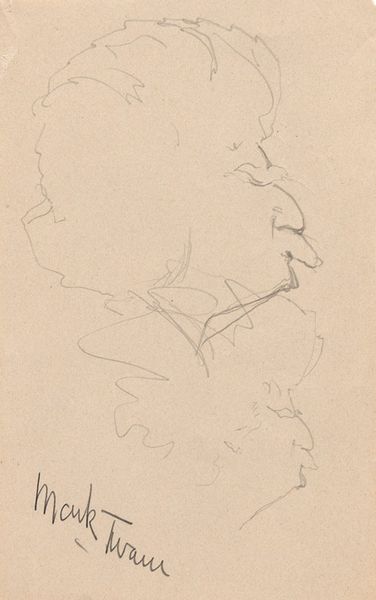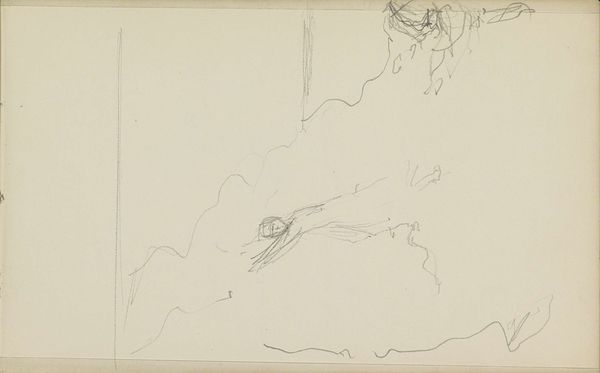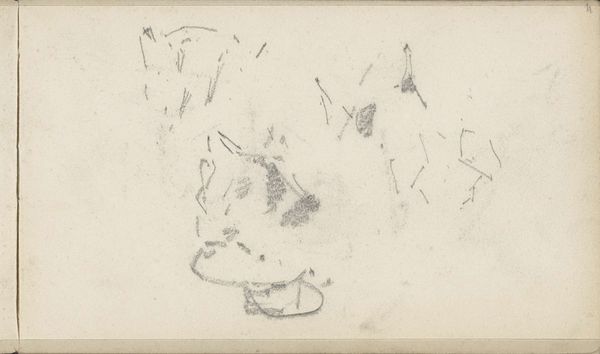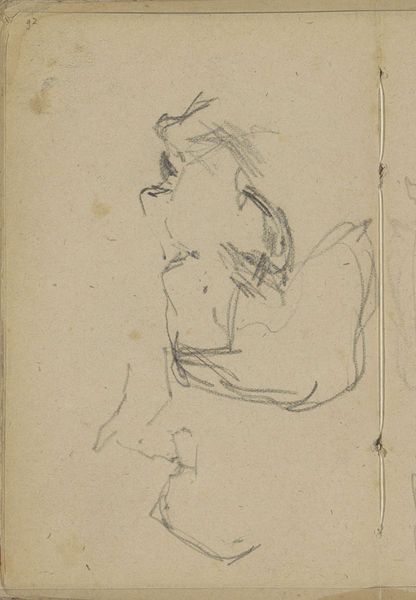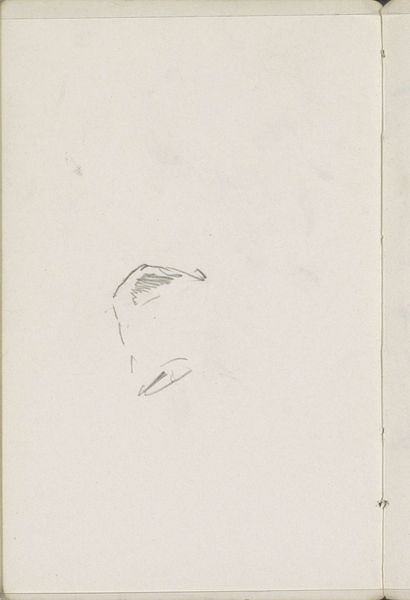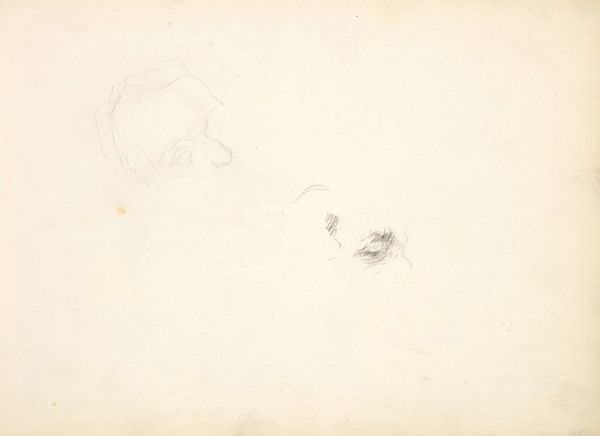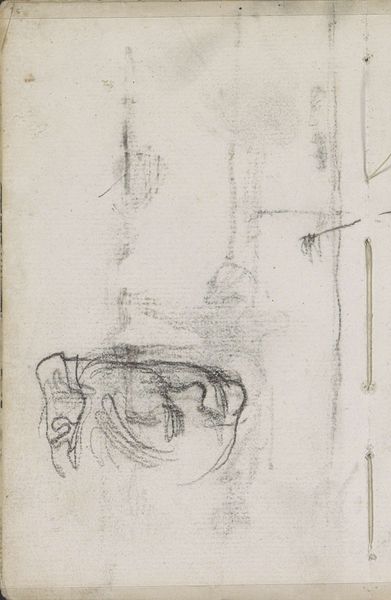
drawing, pencil
#
drawing
#
dutch-golden-age
#
pencil sketch
#
landscape
#
pencil
#
realism
Dimensions: height 102 mm, width 122 mm
Copyright: Rijks Museum: Open Domain
Editor: Here we have Gerard Bilders's "Sketch of a Farm Wagon," created with pencil on paper sometime between 1848 and 1865. It feels very simple, almost incomplete, and kind of humble. What strikes you when you look at this piece? Curator: What strikes me is the social commentary implicit in its realism. Consider the period: the mid-19th century, a time of immense social upheaval and industrialization. Bilders, by focusing on something as seemingly mundane as a farm wagon, subtly highlights the lives and labor of the rural working class. Editor: So it's not just a wagon, it's about the people who used it? Curator: Exactly. Look at the deliberate roughness of the sketch. It's not idealized. It's real, like the lives of the farmers it represents. Think about the power dynamics at play. Who typically got their lives depicted in art? The elite. By sketching this, Bilders subtly shifts that focus, giving visibility to those often overlooked. Editor: That makes me look at it differently. The unfinished quality now feels less like an oversight and more like… a statement? Curator: Precisely! It can be seen as an act of artistic solidarity. This drawing, although simple, invites us to consider questions of labor, class, and representation within the broader social context of 19th-century Netherlands. Editor: I never thought a simple pencil sketch could have so much to say about society. I am learning a lot about art history. Curator: Art is never created in a vacuum. Every brushstroke, every sketch, holds within it the echoes of the society that produced it.
Comments
No comments
Be the first to comment and join the conversation on the ultimate creative platform.
